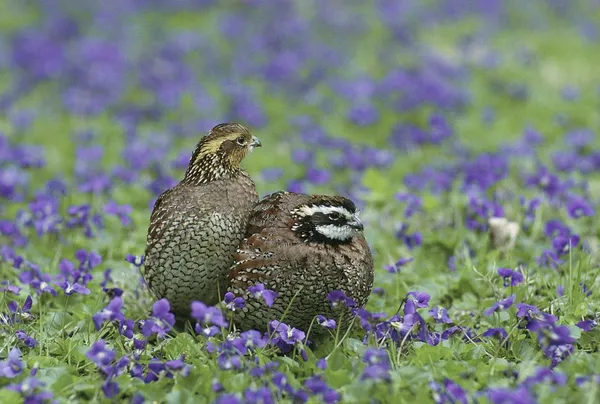Anoles, Quails, and Maybe Cattails
Northern Bobwhite Quail
It's a hot, July afternoon. The sun beats down on fragrant plants, including sedges, goldenrod, elderberry, and milkweed. A loud, whistled "bobwhite!" comes somewhere from within the field. The grass rustles, and a small, brown and white striped head pops out, looks around, and then alerts his mate and fourteen chicks that it is safe. The family of bobwhite quail forage happily for seedheads, insects, and berries.
Native game birds, including the beautiful and diverse species of New World Quail, are disappearing from the United States at a rapid rate. Although the disappearance of native birds, including quail, is not fully understood, many experts can agree that decline in natural habitat due to human activity is the biggest factor.

The Northern Bobwhite Quail, Colinus virginianus, is a small, round bird. The Northern Bobwhite Quail was once a common sight in rural areas. Unfortunately, it has been disappearing from the United States for the past few decades, and experts agree that the primary reason is decline of natural habitat due to human activity. The College of Veterinary Medicine & Biomedical Sciences at Texas A & M University says: "The bird was recently named the No.1 bird [declining] in North America by the Audubon Society- [declining] since 1981." This is a problem. Bobwhite quail, in addition to being beautiful and fascinating, are an important part of a healthy and biodiverse ecology.
In the short documentary by Texas Parks and Wildlife, "The State of Quail", Robert Perez explains how "[Conservationists] agree that the root cause [of the Northern Bobwhite] is changes in the quality and quantity of habitat." In the video, Texas Parks and Wildlife talk about the decline of many once common New World Quail, and the causes. When talking about the Gambel's Quail, Callipepla gambelii, they explain that: "While Gambel's have fared better than some, every quail species in [Texas] has lost some ground." Scaled Quail have lost about 5% of their original habitat in Texas alone, according to Eric Grahmann, Gamebird Science Program Director at Texas A & M. The Montezuma, or Mearn's Quail, which has always had a smaller range, is losing its home, too.
The habitat of these native quail is vital to their survival, no matter where in the U.S. the quail lives. When cattle ranches and land developers take away the native prairie grasses, the quail are unable to live there. Jim Willis is the President of the Wildlife Habitat Federation, and in "The State of Quail", he shows an example of native grass. In the documentary, the impressive length of the roots are easily seen, and those roots conserve moisture. He explains that: "Man has come in and ripped out a lot of this native grass and planted what [they] call "Improved Grasses" which is really not improved, they're an invasive species [...] and [the invasive grasses] don't give back to the soil. They take from the soil." To make things worse for the quail, a ground dwelling bird, this invasive grass is very thick. New World Quail are at most a foot tall, and their chicks are only the size of a quarter. The invasive grass, being extremely thick, is very difficult for even adult quail to walk through.
Michagan's only native quail is the Northern Bobwhite, which has been declining in Michigan due to similar reasons researchers found in Texas. In Michigan Radio's interview with Al Stewart, an upland game bird specialist with the Michigan Department of Natural Resources, Stewart says: "The number of northern bobwhite quail has declined by 85% since 1966. The birds were once common in much of [...] Michigan's Lower Peninsula, but they're a rare sight today." Al Stewart talks about factors that impact the quail populations, and how both industrial farming and cold winters affect bobwhites. He explains, "What really impacts quail, more than anything else, is winter." Although quails can bounce back from this, declining habitat from 1903-1978 added to cold winters is causing quail to diminish faster than before. Stewart continues to explain what needs to be done for the bobwhite quail, including restoring the grasslands and native plants that bobwhites rely on.
More Quail Species
In addition to the Northern Bobwhite, there are many more beautiful and diverse quail species. You can read about them here: